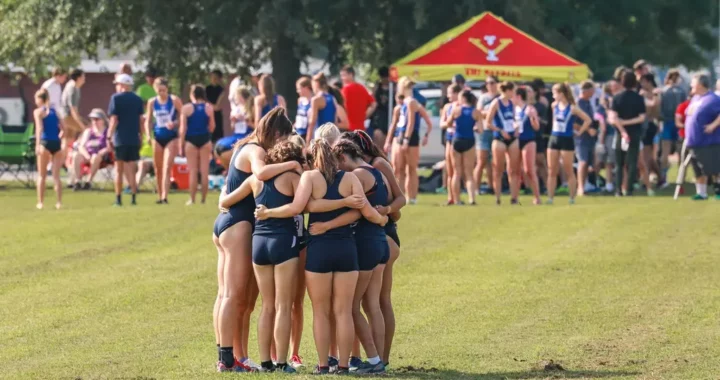UMW Senior Runs For Her Life in Obstacle Race
3 min readBy MADELINE McDONALD
Fog hissed into the tunnel as the countdown began. “Ten… nine…eight.”
I swallowed hard, trying not to think of the horrors I was about to encounter on the other side.
“Six…five…four.”
Was I going to make it? Could I handle everything this course had to dish out at me?
“Three…two…one!”
The gate slid open and the crowd of runners jogged out through the fog. I then found out just what I’d signed up for.
Run for Your Lives is “a zombie infested 5K obstacle course race,” according to the event’s website. Runners must navigate obstacles and zombie swarms while wearing a flag-football-style belt with three flags. The goal is to finish the course with at least one flag on your belt, signifying that you survived.
Creators Ryan Hogan and Derrick Smith held the first official race in Darlington, Md. in October 2011. They wanted to find a way to promote Hogan’s athletic clothing line, Warwear, by creating an event similar to races such as Tough Mudder, according to an article by Aaron Sagers on CNN’s website.
I discovered Run for Your Lives in August and began training. The last time I’d run a 5K I’d been in grade school, and the closest thing to an obstacle course I’d ever experienced was weaving through safety cones in gym class. I had no idea what I was in for. I decided if I could run the prescribed three miles, I would probably be ok. Boy, was I wrong.
Run for Your Lives is nothing like a traditional 5K. Between the obstacles, the zombies and the rugged terrain, it’s more like a survival challenge. Straight out of the gate, I recognized this as I jogged around a bend, trying my best to conserve my energy, and came face to face with a field full of zombies.
Immediately, I had to strategize. There was a huge group of joggers in front of me. As they scattered and drew the zombies in different directions, I sprinted through the hole they made in the field, only to find more zombies. I dodged left and right, running as fast as I could, and made it to the other side of the field with all three flags. I was winded. Luckily, there was a long stretch of empty path ahead, so I slowed down to a walk to catch my breath, conserving my energy for the next sprint.
The rest of the course continued in this pattern. I’d walk, I’d sprint through zombies, I’d complete an obstacle, dodge more zombies and then walk some more to catch my breath. I probably could have jogged more in some areas if I wanted to, though there were definitely long stretches of steep hills and jagged trails riddled with tree roots that I wanted to maneuver slowly and carefully.
The obstacles themselves were a feat of strength and, in some cases, bravery. I jumped into ice-cold water, crawled through mud, leaped over fences and avoided electrical wires. It was a warm day, so the water was actually quite refreshing once I got my breathing under control, but I could have done without the electrical obstacles. I managed to avoid getting shocked, but the threat of real pain on top of fatigue and discomfort was enough to make me want to skip that obstacle all together.
In the end, it was a unique and very fun event. While I finished the race covered in mud with no flags left on my belt, I was still awarded a medal along with every other participant just for completing it.
Next year I’ll definitely be doing some more intense training in order to thwart the pain, obstacles, and more than anything, the zombies, to finish with at least one flag around my waist.



